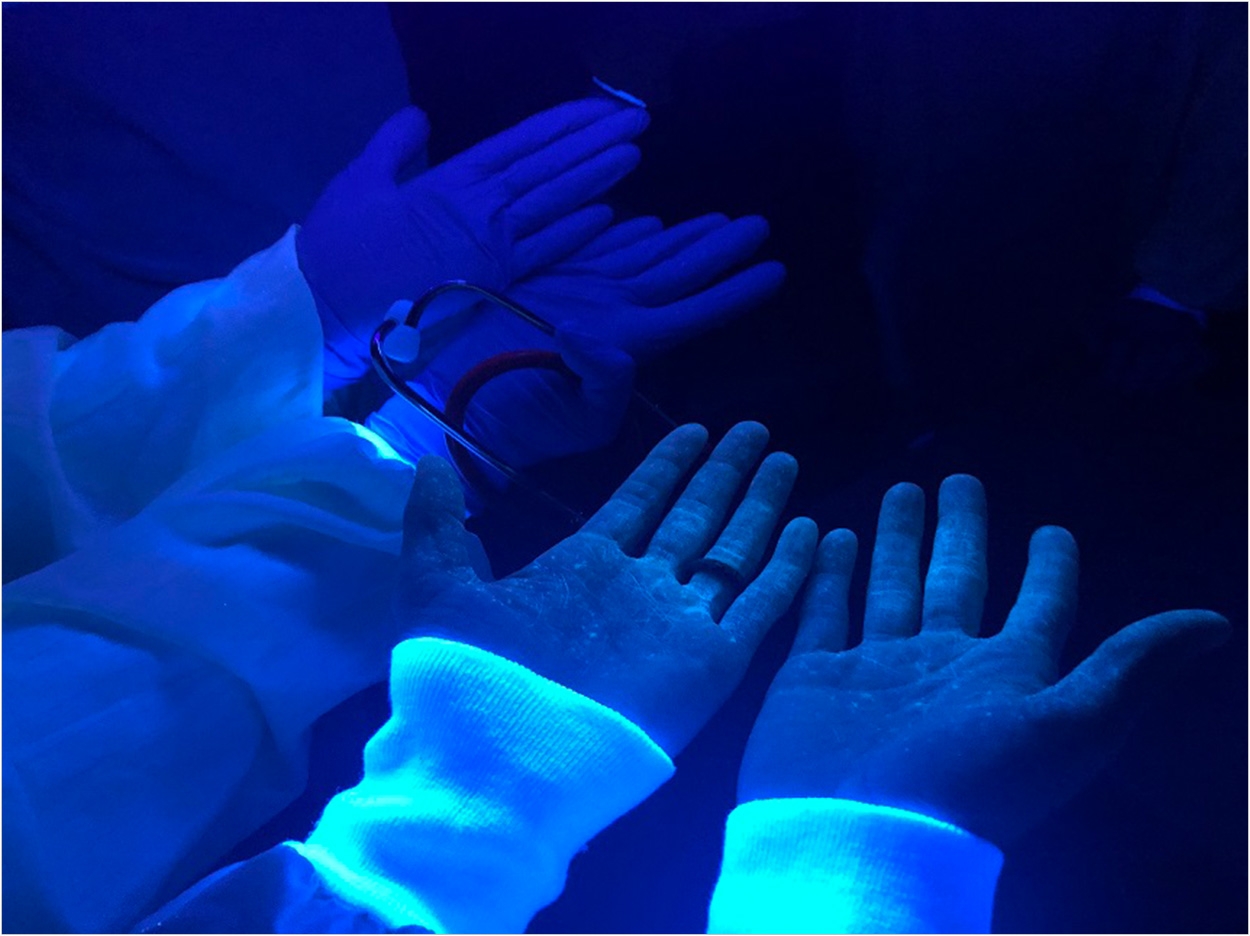
Despite the use of personal protective equipment (PPE), many healthcare workers are contracting the COVID-19 virus. Combine improper PPE use with the aerosol-generating procedures common in dentistry, and the risks of exposure are particularly high.
Now, a novel training technique reinforces the importance of proper PPE donning and doffing procedures with a nontoxic highlighter refill placed in a warm water bath for 15 minutes to create a fluorescent solution only visible under ultraviolet light.
The researchers instructed healthcare staff to put on PPE including a cap, gown, surgical gloves, eye protection, face shield, and N95 mask. To conserve PPE items, supplies were wiped off and reused for multiple training sessions.
After the staff put on the PPE, they went into a room to care for a simulated patient sprayed down with the invisible simulated contagion. The room was not a negative pressure room. The researchers also added the fluorescent solution to a simulated albuterol nebulizer treatment given to the mannequins.
After completing the simulated case, the staff remained in their PPE and were taken to another room, where the lights were turned off prior to removing their PPE. Turning off the lights enabled the identification of widespread simulated contagion on the PPE.
The contagion was on the gloves and gowns from directly touching the simulated patient and on the face shields and masks from the aerosolized solution. The researchers used a black light flashlight to examine each healthcare worker and identify the presence of any solution.
After the flashlight examination, the staff completely removed their PPE. The researchers then found fluorescent solution on the staff’s skin, representing exposure to the contagion and indicating that they made an error while putting on or taking off their PPE.
The most common error among the staff was contaminating their face or forearms during PPE removal. In contrast, those who put on and took off their PPE according to guidelines had no signs of the fluorescent contagion on their skin or face.
“This training method allows educators and learners to easily visualize any contamination on themselves after they fully remove their personal protective equipment,” said Patrick G. Hughes, DO, lead author and director of the Florida Atlantic University (FAU) emergency medicine simulation program.
“We can make immediate corrections to each individual’s technique based on visual evidence of the exposure,” said Hughes, who also is an assistant professor of integrated medical science at FAU’s Schmidt College of Medicine.
By providing healthcare staff with visual evidence of protection during patient encounters with high-risk aerosol-generating procedures, this training method is helping to inspire trust in their training and PPE, the researchers said.
“This experiment demonstrated that following PPE training improves workplace safety and decreases the risk of transmission,” said Hughes. “This simulation-based approach provides an efficient, low-cost solution that can be implemented in any hospital.”
The study, “Does My PPE Really Work? A Simulation-Based Approach,” was published by Medical Education.
Related Articles
Use Your 3-D Printer to Produce PPE During the Pandemic
WVU Develops Face Shield That Works With Loupes and Headlamps
PPE May Cause Serious Skin Injuries


